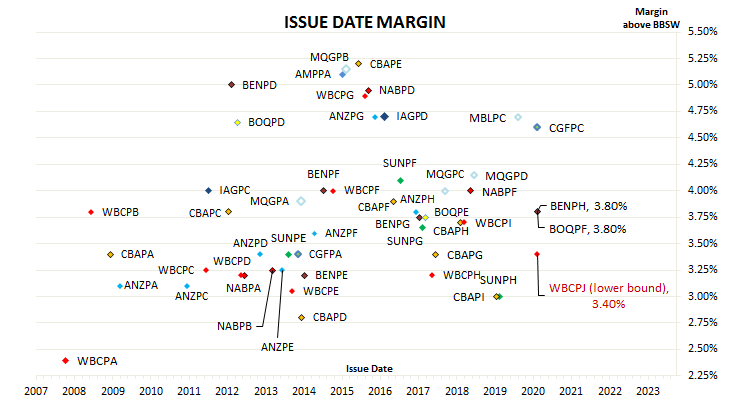Summary: Westpac to issue new hybrid security; offer follows similar issues from Challenger, BoQ and Bendigo; to partially fund redemption of Capital Notes 3; first call date in March 2027; initially to pay around 3.45% (annualised, including franking credits).
In recent years, when an existing Australian hybrid approaches its first call date, sometimes referred to as the first optional exchange date, speculation turns to the likelihood of replacement security. A replacement security makes sense given APRA regulations require banks and other financial institutions to maintain equity capital above certain minimum ratios of assets. Westpac’s latest hybrid security offer is in keeping with this tradition and it comes hot on the heels of similar issues from Challenger, Bank of Queensland and Bendigo and Adelaide Bank.
Westpac plans to raise $750 million via an issue of Capital Notes 7 (ASX code: WBCPJ) securities, with the ability to raise more or less than this amount. The new securities will be perpetual, convertible, subordinated, unsecured, transferable, redeemable notes and the proceeds will be used for “general corporate purposes”. In practical terms, the proceeds will partially fund the redemption of $1.3 billion Westpac Capital Notes 3 (ASX code: WBCPF) which have a March 2021 call date.
The new notes have some features in common with both equities and debt securities. Distributions are at the discretion of directors but they are calculated according to a set formula with reference to the $100 face value of the securities. The notes will qualify as Additional Tier 1 (AT1) capital under the Basel III bank regulatory framework, which means they have the now-standard “event” clauses which may lead to early conversion into ordinary shares or a write-off of the capital notes should APRA require it. In the event Westpac were wound up and APRA had not already forced a write-off, its hybrids would rank above ordinary shares but below ordinary debt securities and other liabilities.
The new capital notes have an indicative distribution rate equivalent to 3-month BBSW plus a margin which lies in a range of 340bps to 360bps. The final margin will be determined by a “book build” which will be announced on 12 November 2020. A bookbuild is a tender process managed by investment banks on behalf of the issuer in which investment institutions each place bids for a set volume at a price/yield. (This is the same way as the AOFM holds tenders to sell government bonds each week). If history is any guide, then the margin is likely to be set at the lower end.

The chart above shows the history of issue margins of hybrid securities over the last decade or so, including the GFC period in 2008/2009. The new capital notes are shown at the lower end of the indicative margin (340bps).

